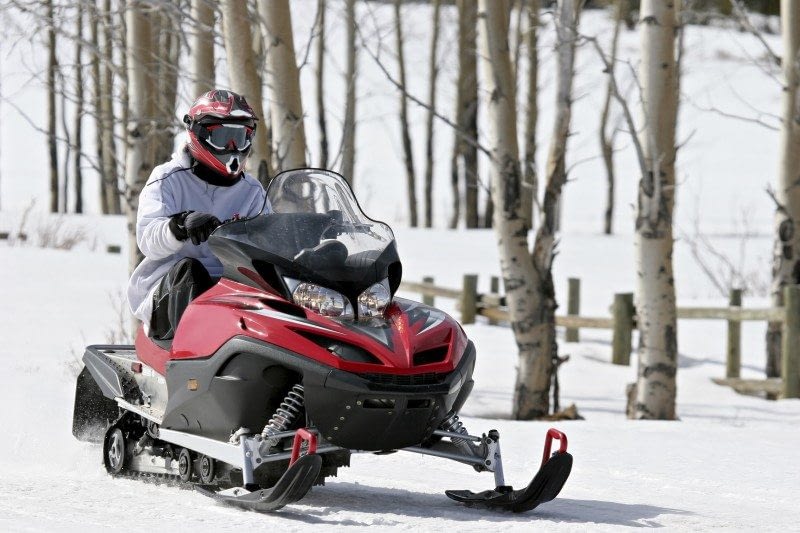

“If you’re out there with the right safety gear and the right cold-weather gear, it can be something very enjoyable,” says Laurie Cisewski, a claims adjuster with Grinnell Mutual Reinsurance Company. “You’re going through the woods and it’s beautiful.”
Snowmobiling is fun, but it challenges the body and mind. The wind, sun, glare, cold, vibration, motion, and other factors work together to affect both driver and passenger.
Grinnell Mutual recommends being ready to ride and knowing the trails to ensure a fun, enjoyable snowmobiling experience.
Be alert
“You’re going through the woods and it’s beautiful, but you have to be aware of your surroundings,” says Cisewski. “The woods are also the living room of deer, moose, wolves, and other animals. The animals are also using these trails because the snow is so deep off the trail.
“You have a chance of hitting an animal that will cause damage to your snowmobile and injury to you. If you go 50 mph and hit a deer or other animal, you may be seriously injured.”
If you ride with others, Cisewski recommends following at a safe distance and using hand signals to communicate.
“If there’s danger ahead, the lead rider can signal to others,” says Cisewski. “I’ve seen where one snowmobiler rear ends the next one, and there’s a whole chain reaction because they did not ride at a safe distance. Snowmobiles do not stop on a dime.”
There is a temptation for some snowmobile riders to consume alcohol while riding. Alcohol opens the blood vessels and may make people momentarily feel warmer, but it does nothing to increase body heat. Instead, it can lower your body’s core temperature, raising the risk of hypothermia. Alcohol also increases fatigue, fogs your ability to make good decisions, and slows your reaction time. Many states have laws against operating a snowmobile under the influence of alcohol.
Know the trails
Don’t snowmobile alone. Not only is snowmobiling more fun with family and friends, it’s safer, too. But before you hit the trail, look at the map.
“It’s a safety thing. Everyone needs to look at the map. Look for bends in the trail, road crossings, and open water,” says Cisewski. “There are warning signs, but sometimes they get covered up with snow.”
Local snowmobiling clubs know their local trails well. In fact, they may be the ones grooming and maintaining the trails through the winter. If you plan to ride a trail that’s new to you, consider reaching out to a local club.
Call your independent insurance agency, Pardridge Insurance, with any questions you may have about any insurance needs. Our number is 815-758-4447.
For trail conditions, trail maps, and more information about snowmobiling rules and regulations, click the links below from state agencies and snowmobiling associations.
• Illinois: trail maps and general information
• Indiana: trail reports and general information (including links to trail maps)
• Iowa: trail maps and general information
• Minnesota: trail conditions, trail maps, and general information
• Nebraska: list of trails and general information
• North Dakota: trail conditions and maps and general information
• Ohio: general information
• Pennsylvania: trail conditions and general information
• South Dakota: trail conditions and maps and general information
• Wisconsin: trail conditions, trail maps, and general information

